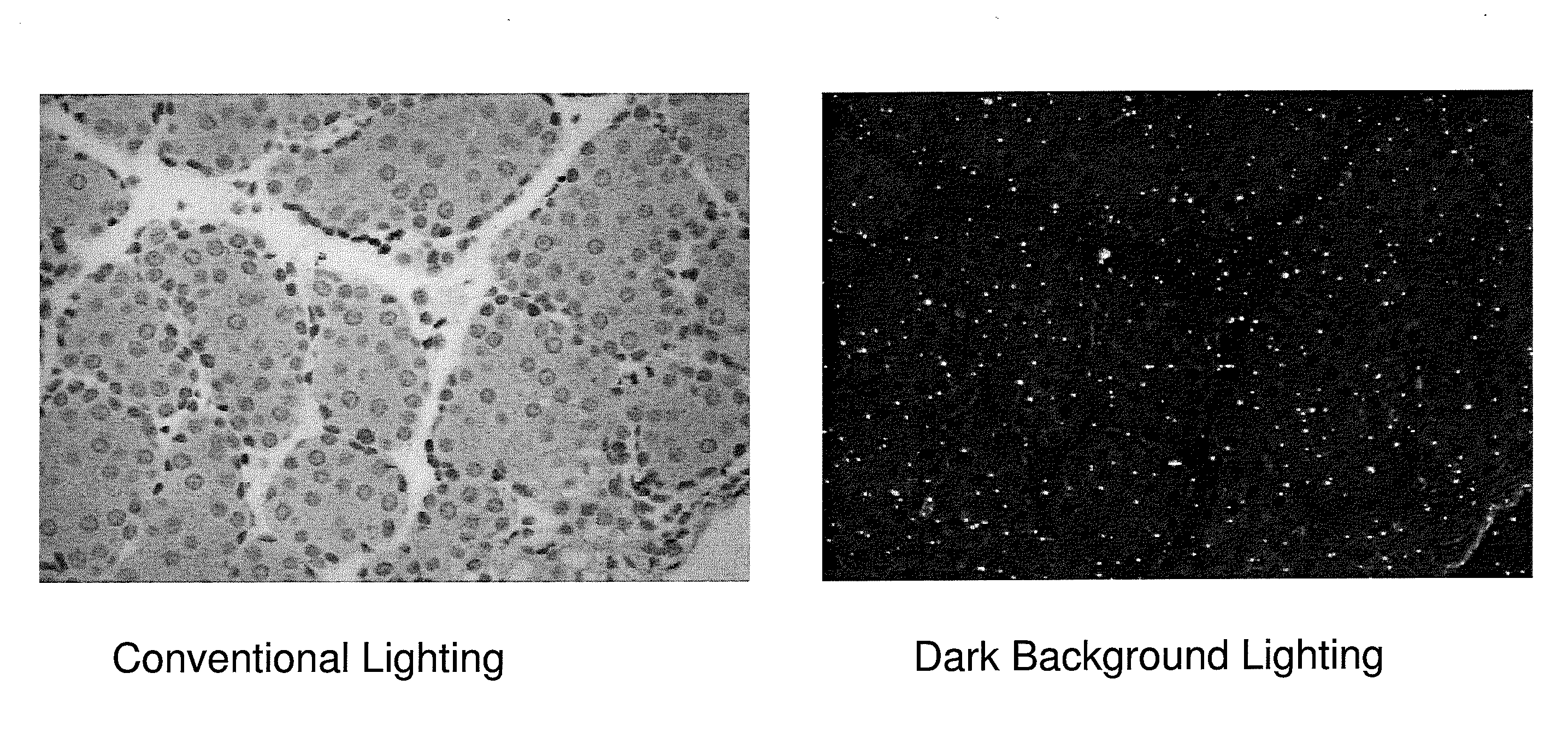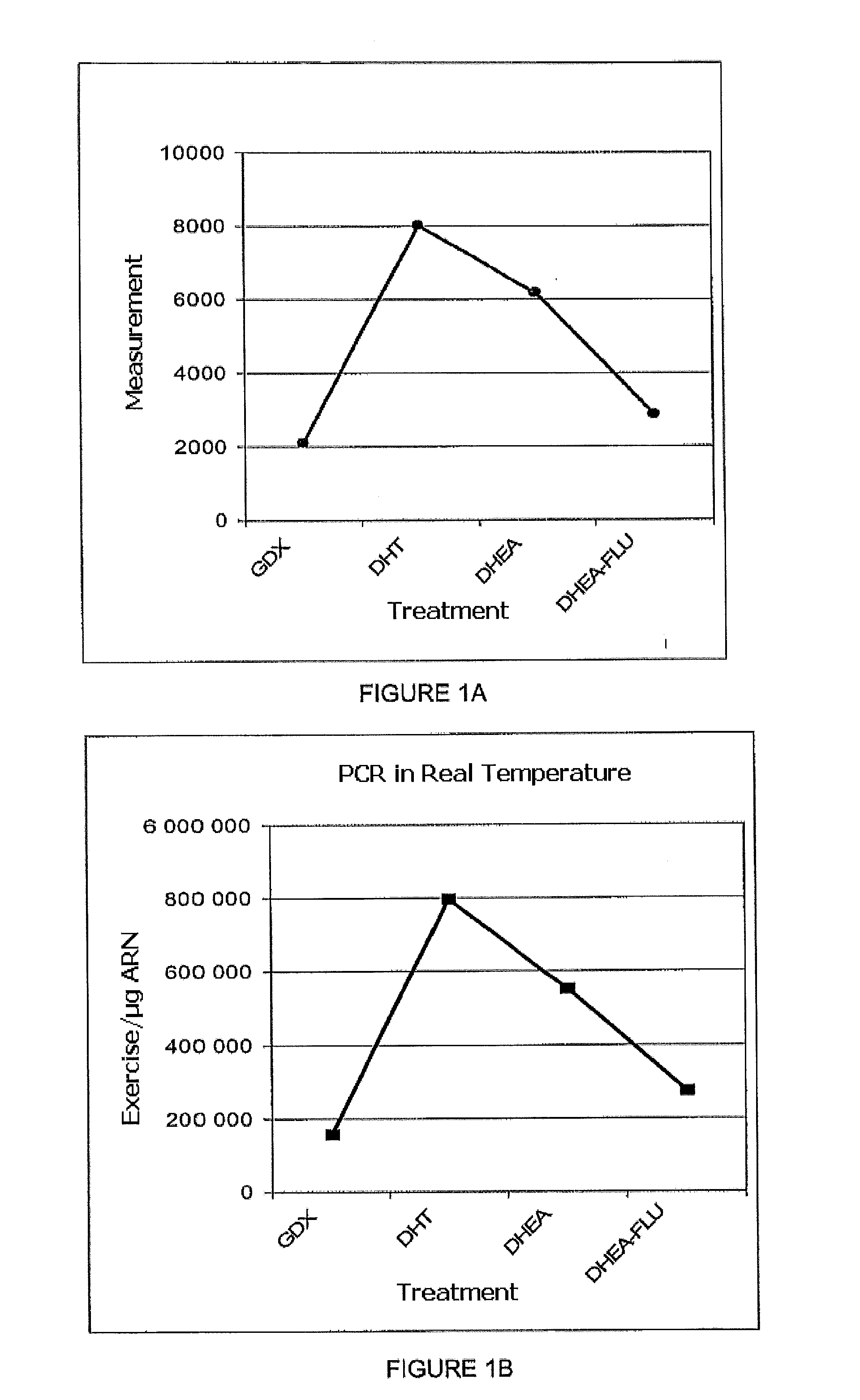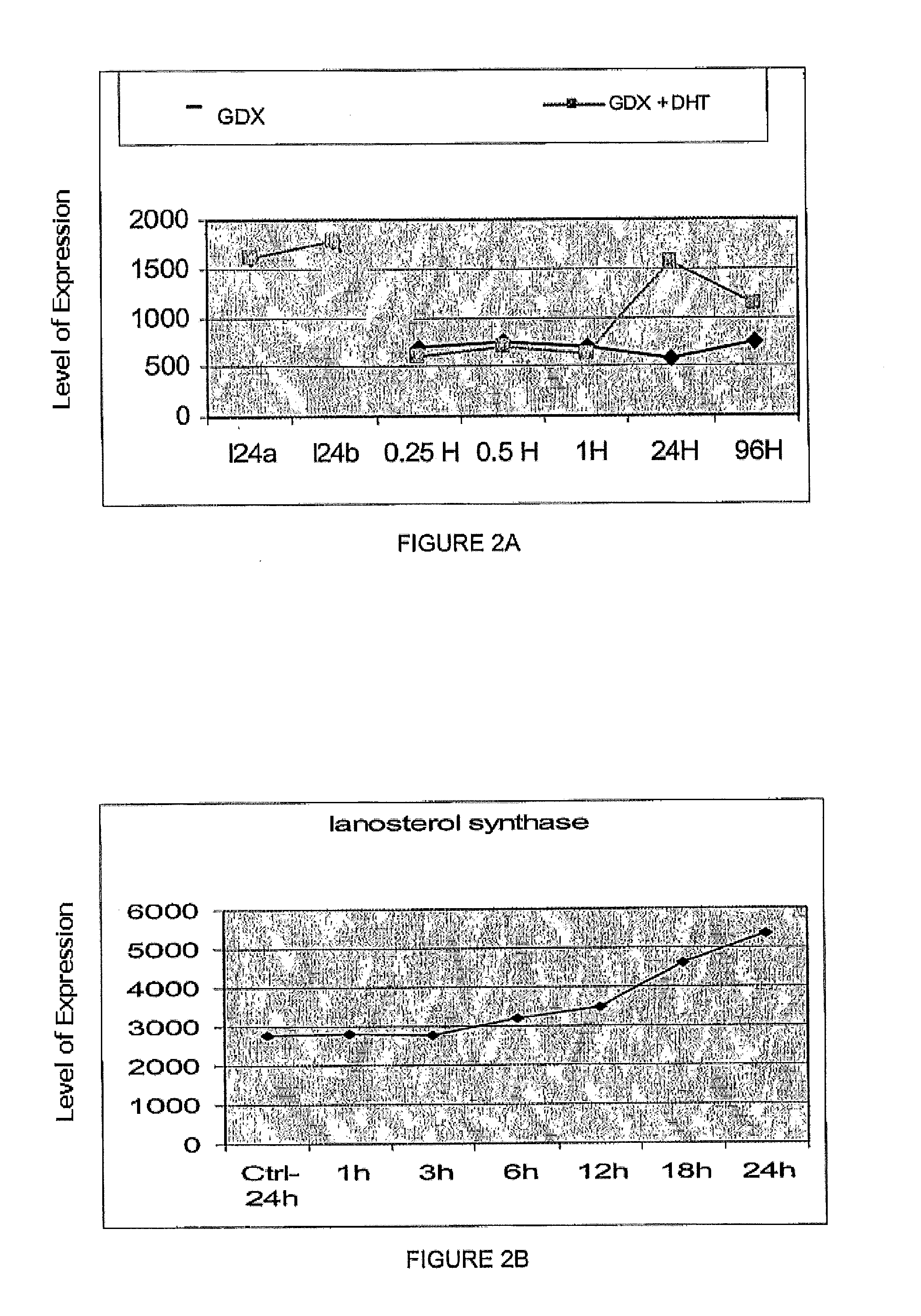Modulators of lanosterol synthetase for treating acne or hyperseborrhea
a technology of lanosterol synthetase and modulators, which is applied in the direction of dermatological disorders, drug compositions, instruments, etc., can solve the problems of potentially severe side effects of agents, and achieve the effect of preventing and/or improving acne and skin disorders
- Summary
- Abstract
- Description
- Claims
- Application Information
AI Technical Summary
Benefits of technology
Problems solved by technology
Method used
Image
Examples
example 1
Expression of Lanosterol Synthetase in the Human Sebaceous Gland and in the Human Epidermis
[0101]Human sebaceous glands were separated from the human epidermis by treatment with dispase and dissection under a binocular lens. Samples of total RNA were prepared from the sebaceous glands and from the epidermis.
[0102]The expression of the genes was analyzed on an Affymetrix station (microfluidic model; hybridization oven; scanner; computer) following the protocols provided by the company. Briefly, the total RNA isolated from the tissues is transcribed to cDNA. From the double-stranded cDNA, a cRNA labeled with biotin is synthesized using T7 polymerase and a precursor NTP conjugated to biotin. The cRNAs are then fragmented to small sized fragments. All the molecular biology steps are checked using the Agilent “Lab on a chip” system in order to confirm the good efficiencies of the enzymatic reactions. The Affymetrix chip is hybridized with the biotinylated cRNA, rinsed and then fluorescen...
example 2
Expression of Lanosterol Synthetase in the Mouse Preputial Gland
[0105]A. The mouse preputial glands show differentiation of the sebocyte type and are used as an experimental model for a sebaceous gland. They have a sufficient size to allow isolation of RNA without having recourse to microdissection technologies.
[0106]Analysis of the expression of lanosterol synthetase in the mouse preputial glands was carried out under conditions of deficiencies of steroid hormones (in particular of androgenic hormones) following a gonadectomy. The gonadectomized animals were then treated with physiological quantities of Dihydrotestosterone (DHT) or Dihydroepiandrosterone (DHEA) in order to restore a physiological level of androgenic hormones, or as a control experiment with a DHEA-Flutamide combination in which the Flutamide, an antagonist of the androgen receptors, blocks the effect of DHEA. Comparison of the gene expression under these experimental conditions makes it possible to unambiguously id...
example 3
Expression of LSS in the Sebaceous Gland of Mouse Skin by “In Situ Hybridization”
[0115]Methods:
[0116]Sense and anti-sense probes were prepared from the LSS gene by incubation of the linearized gene (2 μg) with 63 μCi of [35S]UTP (1250 Ci / mmol; NEN, Massachusetts, USA) in the presence of T7 or T3 RNA polymerase. The in situ hybridization was carried out on a mouse tissue fixed with formaldehyde and embedded in paraffin. Sections (4 μm wide) were then deparaffinized in toluene and rehydrated in an alcohol gradient. After drying, the various sections were incubated in a prehybridization buffer for two hours. The hybridization was carried out overnight in a hybridization buffer (prehybridization buffer with 10 mM DTT and 2×106 cpm RNA / μl 35S-labeled) at 53° C. The excess probe was removed and the sections were inclined in an LM1 emulsion (Amersham Biosciences, UK) and exposed in the dark at 4° C. for at least one month. The sections were then developed and counterstained with hematoxyli...
PUM
| Property | Measurement | Unit |
|---|---|---|
| pH | aaaaa | aaaaa |
| concentration | aaaaa | aaaaa |
| volume | aaaaa | aaaaa |
Abstract
Description
Claims
Application Information
 Login to View More
Login to View More - R&D
- Intellectual Property
- Life Sciences
- Materials
- Tech Scout
- Unparalleled Data Quality
- Higher Quality Content
- 60% Fewer Hallucinations
Browse by: Latest US Patents, China's latest patents, Technical Efficacy Thesaurus, Application Domain, Technology Topic, Popular Technical Reports.
© 2025 PatSnap. All rights reserved.Legal|Privacy policy|Modern Slavery Act Transparency Statement|Sitemap|About US| Contact US: help@patsnap.com



